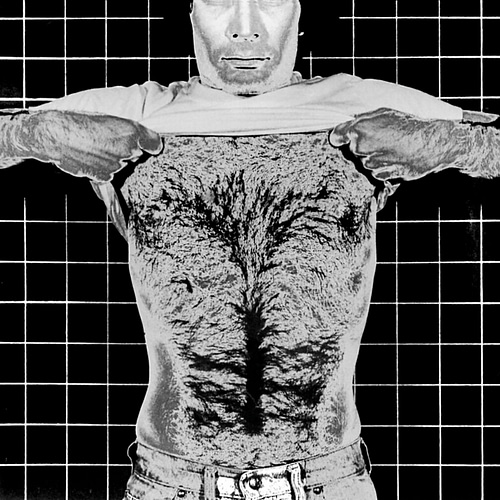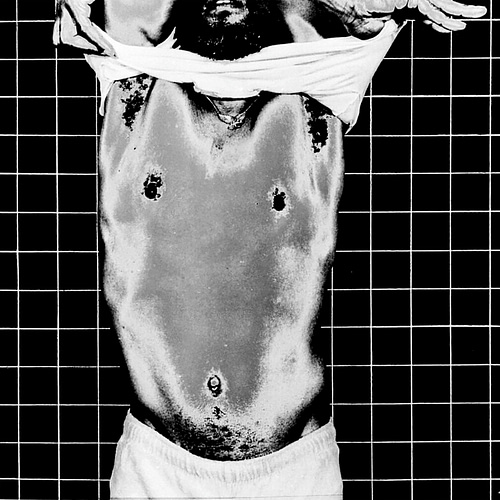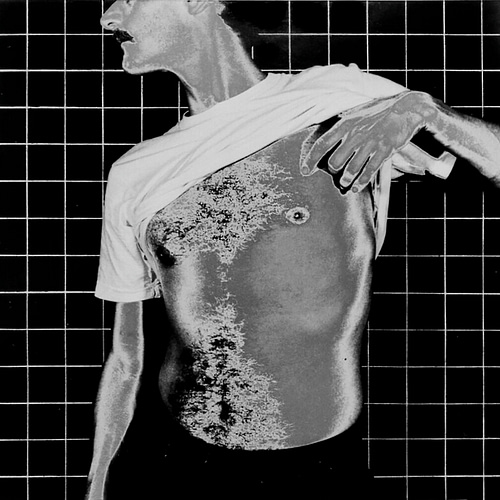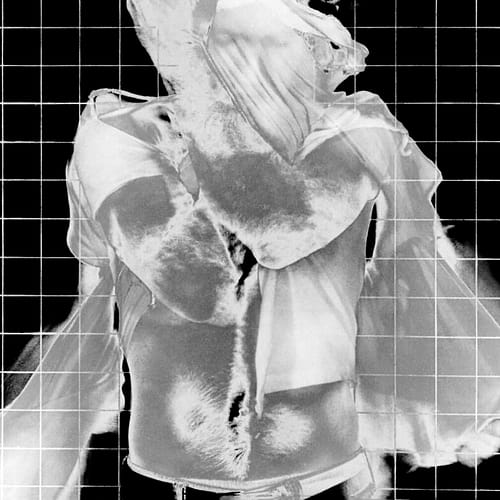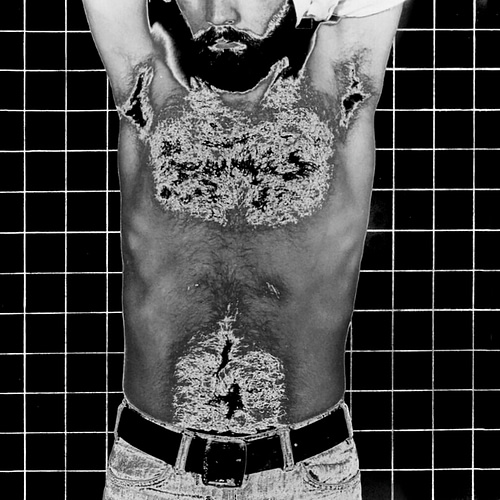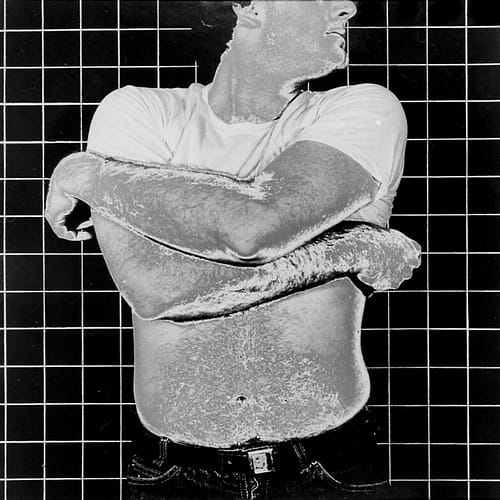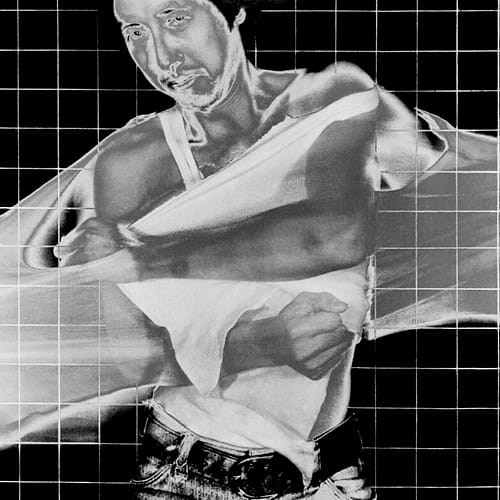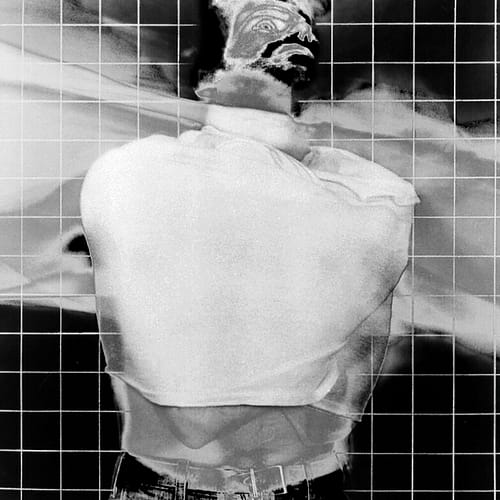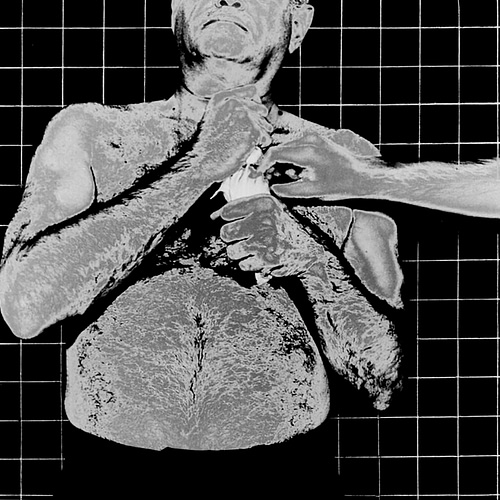Breastplates
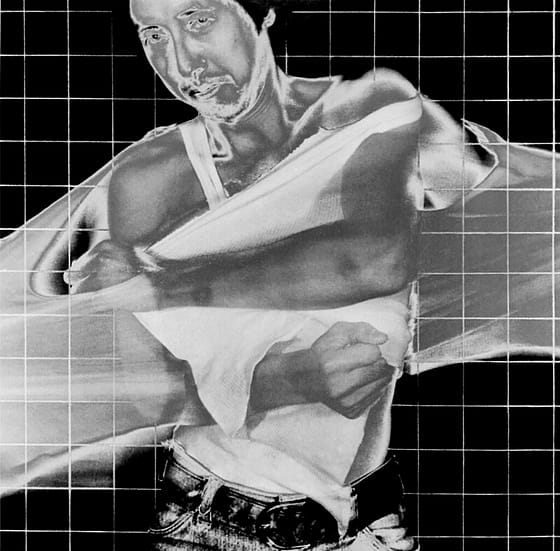
Breastplates, #20 (Patrick Nagatani)
In the late 1970s and early 1980s, I was exploring my masculinity, both personally and culturally. This coincided with ending of Feminism’s second wave. I was involved in many hotly-debated discussions about increased participation by women in both higher education and the art world. Through these interactions, I began to look at myself, my upbringing, and how that upbringing played out in my life as a young man.
Breastplates was a series of 28 photographs (10 of which you see here) about men and how we relate to one another in this culture. The women’s movement had done a great deal to dispel myths about women’s roles in our society. And this process allowed me to deal with the myths surrounding masculinity and how we think of ourselves and those we interact with.
The title Breastplates (formerly entitled “Breast Plates”) comes from the term used to describe medieval armor worn by warriors to protect themselves. I have used the metaphor of taking off one’s t-shirt (a contemporary symbol for masculinity) to represent the stripping away of those traditional devices that have protected and often imprisoned us.
The grid behind each figure symbolized measurement and staying within the boundaries of society’s expectations. The feel of these images conveys a scientific study, and these are part of its documentation (it was no coincidence that I was a medical photographer at UCLA at the time). In earlier pieces, the grid remains in the background, exerting a subtle yet powerful influence on our lives. In later images, the figures become actively involved with the grid as they struggle to free themselves. The solarization of the photos (a partial reversal of tones done during printing) conveys an x-ray quality. And my use of slow shutter speeds imparts a sense of disintegration.
Here are ten images from a series of twenty-three. In its entirety, the series operates as a narrative, moving from what has been the traditional male stance to the process of questioning and change that many men find themselves even today, forty years after I made them. In our present, toxic masculinity is still an issue. The struggle to remove the breastplate is a difficult one. And for many of us, the acknowledgment that it even exists is problematic.




